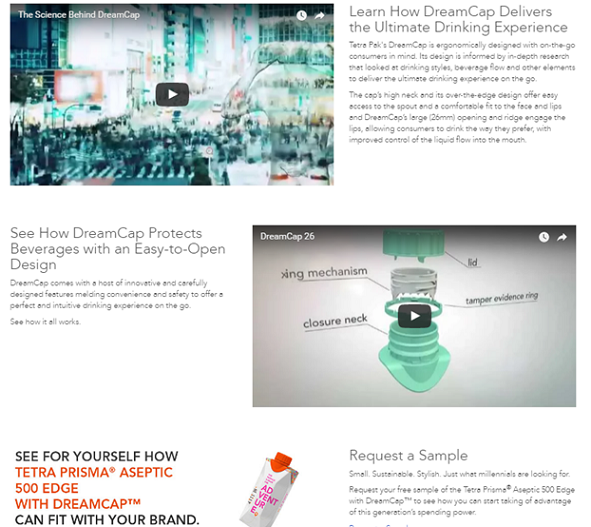
 In a world where audiences are deeply immersed in content, marketers need to adapt to this changing landscape. This has led to the rise of content marketing as a storytelling vehicle, with brands shifting from simply crafting messages to creating experiences.
In a world where audiences are deeply immersed in content, marketers need to adapt to this changing landscape. This has led to the rise of content marketing as a storytelling vehicle, with brands shifting from simply crafting messages to creating experiences.
B2C marketers seem to have generally embraced this shift earlier in the days, prioritising content marketing. Blogs and content hubs are now regarded as ultimate megaphones for companies; websites have to be more interactive and social media channels hold the reins of CRM. According to Content Marketing Institute, 37-percent of B2C content marketers are developing a more documented content strategy than before and dedicating approximately 32-percent of their budgets to it.
But while B2C brands have grown increasingly mature in their understanding of content, many B2B businesses, particularly in India, are still early on in their transition to delivering the essentials customers want to consume. There’s no question that whitepapers, case studies and webinars are important elements in the content marketing toolbox of businesses. After all, audiences and buyers want best practices and key industry insights that will help them get ahead. The stark reality, however, is that businesses are so focused on increasing their content output that they lose sight on keeping their content effective.
In order to succeed in the unique B2B space, marketers need to go back to the drawing board; looking into the fundamental goals of content marketing: engaging, retaining and converting.
So here are 3 best practices that will help B2B marketers succeed in their content strategies
#1: Know Your Audience First and Then Build Awareness
Knowing what your customers want will help you in outlining the content required on your website or blog. After all, your corporate website is the face of your brand in the digital world, and is often the initial touch-point between brand and customer.
In just about every aspect of their web experience, customers should be able to walk away with an understanding of your business, the fact that they possess a need, and certain value propositions of your product, or service.
Apart from tagging each piece of your content with potent meta-data, think about the emotional connection that your content can create, so that customers remember you. Consider publishing whitepapers and blog posts on relevant social media channels or content publishing websites. Thought leadership pieces are also a great content-type to consider.
#2: Take Customers through the Consideration Stage
Moving the customer from awareness to consideration typically involves feeding them with information that generates positive brand sentiment, and illustrates why your brand is a better alternative over your competitors. As customers continue their research, they are likely to be hungry for personalised product demonstrations, and in-depth information such as pricing, recommendations and case study examples.
When creating content for this stage, look at refining the flow of your content. This means offering your customers everything they need so they won’t have to search for information elsewhere. Your web design should follow a simple, logical navigation path to the products and services your business has to offer – which will in turn, help deepen your customers’ online experience.

Take a look at Tetra Pak, a leading food processing and packaging solutions company with a growing presence in India, as a good example of engaging content creation. In a campaign around a new design called the DreamCap, Tetra Pak sent fun, dimensional mailers to brands and retailers, educating them about the new innovation. Developed with the aim of allowing prospects to experience the revised packaging themselves, the branded mock-up also included a clear call-to-action to the Tetra Pak webpage which featured a hypervideo. This allowed recipients to further delve deeper into product features they were interested in exploring.
Although intricacies behind the product design can be technical, Tetra Pak was able to demonstrate the advantages of its packaging by allowing potential buyers to interact with the product both offline and online, ensuring they are fed with the necessary information at the consideration stage – just like how B2C brands would market to end consumers. All these play part in moving the buyer straight from awareness through to consideration in the purchase funnel, in a matter of seconds.
#3: Facilitate Conversion
Measuring conversions in B2B marketing is not always easy.
Take the Enterprise Software industry, for example – according to a recent study by tech media company TechTarget, when choosing a new software for an organization, buying teams often involve 4+ stakeholders, which means you need to reach and engage with various decision makers during their individual process of researching and selecting your product or solution.
Clearly in this scenario content becomes a must-have for B2B brands, and marketers are looking at more innovative ways to create high-quality content that not only establishes authority but builds meaningful relationships with their target consumers.
Cisco India, a pioneer in the cybersecurity industry, is a great example. Facing the challenge of reaching decision-makers in a niche market beyond the traditional formats of marketing, Cisco launched a series of thematic content across key topics of threats, services and solutions on its corporate website. Their choice of using video-rich content on their home page also elicited remarkable response in terms of driving meaningful engagement with their target audience.
With a quick skim, interested buyers are also able to locate a reseller and download design guides across categories such as mobility, security and data cloud in order to hit the ground running. These powerful calls to action are what makes for a robust B2B online marketing strategy.
In conclusion, what B2B marketers should focus on is long-term relationship building, collaborating or providing business solutions. Only those that hit these core points when dealing with B2B content marketing hold the keys to competitive differentiation.
According to the Content Marketing Institute, 76-percent of overseas B2B companies are looking to position themselves as thought leaders or experts through content creation this year. It’s time that B2B companies in India too, focus on perfecting their online marketing strategies to yield greater business results in the long run.
Written by Neeraj Singhal, Director of Amplify Sales for Outbrain in India
